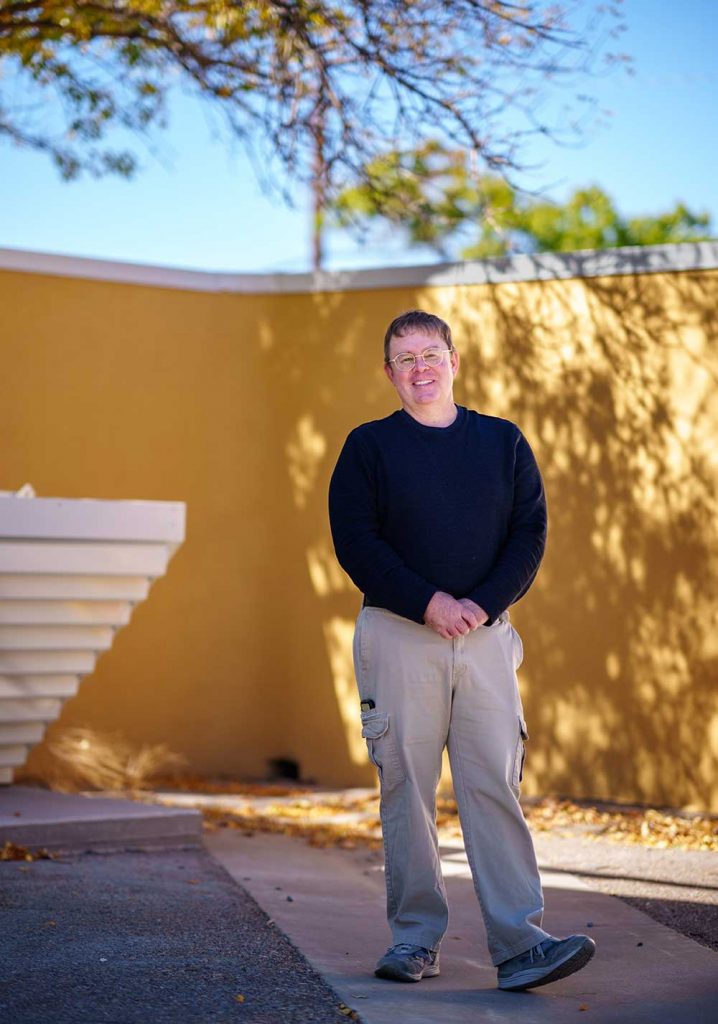
Sandia electrical engineer Michael Ropp has been named a Fellow of the Institute of Electrical and Electronics Engineers, one of the world’s largest technical professional organizations.
Michael’s research focuses on developing algorithms to improve the resiliency of the electrical grid, particularly with the addition of many sources of renewable energy such as rooftop solar panels and wind turbines. One source of resiliency, and technical challenges, is the ability to form small “islands” of power around hospitals, water treatment plants and other critical infrastructure, called microgrids, if the main grid goes down.
IEEE Fellow is the highest grade of membership, and fewer than 0.1% of IEEE voting members can be selected as fellows each year after a rigorous evaluation process. Michael was nominated by one of his graduate advisers for his work on an issue that can occur with wind and solar plants where they can accidentally separate themselves from the rest of the electrical grid. This is called unintentional islanding, and Michael’s graduate work on detecting this issue is used as the foundation for the unintentional islanding prevention in 75% of inverters on the grid today, Michael said.
“An IEEE Fellow is kind of like a lifetime achievement award, so it is a huge honor,” Michael said. “I’m extremely humbled and grateful to be a part of that community now. There’s just an enormous list of people to thank, and I hope they all know who they are.”
Also, Michael is quite proud of his work as an early pioneer studying the use of time-synchronized voltage measurements, or synchrophasors, for unintentional islanding detection. Using physics theory, computer simulations, laboratory experiments and field tests, Michael and the rest of the Solar Energy Grid Integration Systems team showed that synchrophasors work. So far, the cost of high-speed communication systems and GPS has hindered industrial adoption, but Michael hopes their time will come.
Michael received his bachelor’s degree in music from the University of Nebraska-Lincoln in 1991. He received his master’s and doctoral degrees in electrical engineering from Georgia Tech in 1996 and 1998, respectively. Michael has been a member of IEEE since 1998.
Michael enjoys both playing and writing music and hiking and exploring the Southwest with his family.
“There are two ingredients that need to come together for innovations that make a big difference,” Michael said. “One is you need to have a deep knowledge of the problem and the physical workings of possible solutions. You’ve got to understand the physics well. Two is you need to have a dedicated block of time to think. It takes time; innovation is not something you can just schedule.”